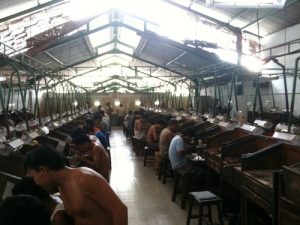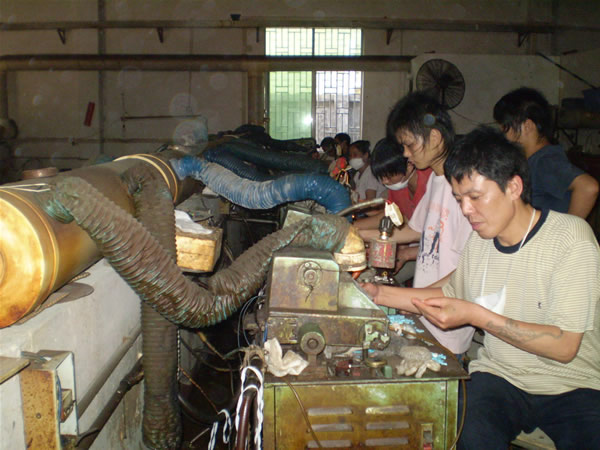Question: Do you know where your jewellery comes from? How much do you care?
When you’re shopping for jewellery, it’s hard to be a conscientious consumer, particularly when you’re tempted by the ever decreasing prices. But the reality of cheap, overseas made jewellery can make your eyes water. Literally.
The tragedy at the Bangladesh clothing factory has left Australian fashion retailers with some awkward questions to answer, as highlighted in a recent ABC 7.30 Report. But, as most consumers are probably already aware, the clothing industry is not the only one that should be under scrutiny.
The American retail giant Walmart is just one of the Western fashion retailers that have come under pressure in the wake of the Bangladesh disaster for their alleged lack of corporate social responsibility towards workers and their working conditions; only a couple of years ago it was being slammed for the alleged poor conditions of workers producing its so-called ‘responsibly sourced’ jewellery collection. Bolivian workers complained that they weren’t given enough safety equipment, such as masks when polishing, they were bullied in the workplace, given mandatory overtime and low wages.
Unfortunately, they’re not alone. Jewellery factory workers in general in countries such as China, Korea, Taiwan, Indonesia, India, etc, can be subjected to poisonous chemicals and dust under non existent health and safety practices. Workers in jewellery workshops are known to be at risk of contracting silicosis – a serious lung disease caused by exposure to dust in environments without proper ventilation.
So what happens when poorly trained workers on a production line are subjected to appalling conditions and manufacturers are under pressure from retailers to produce ever cheaper goods? It doesn’t take rocket science to work out that it’s not going to result in top quality goods.
 We have first hand experience of some of the illegal plating practices for example when we’ve repaired overseas made jewellery. Working on some silver pieces recently, it became obvious that the silver was plated with copper which was then plated with something else to stop it tarnishing, using a chemical plating technique which gave off toxic fumes when heated up. Other problems we encountered have included stones that aren’t properly set, gold stamped as 10ct that didn’t even test as 9ct, and gold so thin we could mark it with a fingernail.
We have first hand experience of some of the illegal plating practices for example when we’ve repaired overseas made jewellery. Working on some silver pieces recently, it became obvious that the silver was plated with copper which was then plated with something else to stop it tarnishing, using a chemical plating technique which gave off toxic fumes when heated up. Other problems we encountered have included stones that aren’t properly set, gold stamped as 10ct that didn’t even test as 9ct, and gold so thin we could mark it with a fingernail.
If you’ve ever had a reaction to wearing gold or silver jewellery, this is because there is still a problem with overseas manufacturers using nickel in their metal. Such jewellery is banned in Europe. Some of the white gold we see coming in has been mixed with cheap metal alloys to keep the prices down and it looks yellow under the rhodium plating. It makes it quite soft and certainly not durable. Gone are the days when you can hand down this jewellery to your children – let alone your grandchildren!
Sadly, when it comes to buying mass produced jewellery, you don’t always know exactly what you’re paying for. Worse, as consumers wanting the best possible deal, we’re fanning the flames of these poor production practices. Consumers have the power to change that by buying Australian made jewellery – or by not buying any at all! But next time you’re in a jewellery store, ask them where the jewellery’s been made. It might just make you think.

